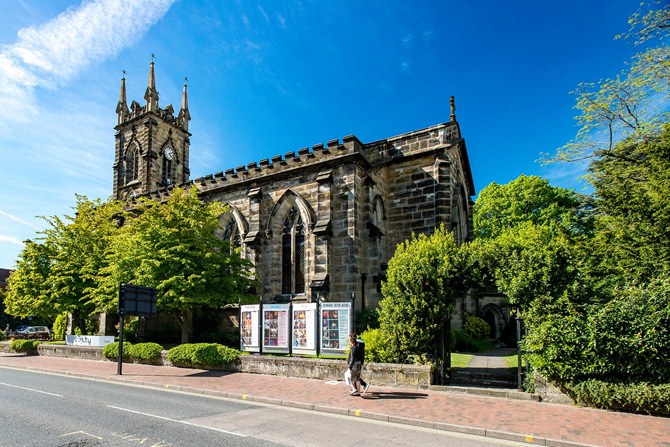As a developing spa town in the early 1800s, Tunbridge Wells was short of church capacity and had no parish church. As a result of an application to the Church Commissioners Fund for new churches in 1818, the first stone for the Holy Trinity Church in Tunbridge Wells was laid on August 17 1827 with sandstone found locally in Calverley Quarry.
The church was designed by renowned Victorian architect Decimus Burton, who was already commissioned to design villas in Calverley Park, in the Gothic Revival and was constructed by Mr Barrett of Tunbridge Wells, a local builder. The finished church, which cost just over £12,000 to complete including fitting out, was consecrated in September 1829.
Holy Trinity Church’s most famous vicar Canon Edward Hoare, is commemorated on the entrance of the building and memorialised on St John’s Road, was considered in his time to be the moral heart of the town. His sermons drew many from around the area and it was often commented that the building was overflowing with parishioners.
Church Commissioners deemed the building ‘redundant to pastoral needs’ in 1974, and the church was left empty and once again it turned to the local community to make its feelings known. In the same year, the Tunbridge Wells Civic Society raised a petition which led to the commissioners giving the Society one year to find an alternate public use for the building. The agreement was then made that the building would be a community and arts centre. In just six months £50,000 was raised in a campaign in which the public were asked to contribute and a long-term lease was signed in January 1977 with the Diocese of Rochester.
Subsequent grants in the past 25 years have allowed developments which include a caf� that serves a selection of hot food, light bites including paninis and a selection of homemade layer cakes from Monday to Friday as well as a public bar that serves premium lager Cinque which is brewed with a blend of five grains and if you’re feeling fancy there’s a selection of gins available including Tanqueray and Gordon’s.
The redevelopment of the side rooms allowed for art shows and local arts classes to be provided and in March 1996 an application was approved by the National Lottery for £600,000 of additional internal improvements which provided a computerised box office, new seats and an access ramp for wheelchair users.
Trinity Theatre has hosted a broad range of performers and groups from household name comedy to the Royal National Theatre, as well as hosting a regular film program and international performing and visual arts. 90,000 people now coming through its doors annually and the theatre is now acknowledged as one of the leading arts and performance venues in the South East of England.
SIT: The back of the stalls are the best seats in the house for both film and theatre but, that said, they have no restricted view seats with audience able to see everything from everywhere. It depends how close you want to be to the action!
Church Road, Royal Tunbridge Wells TN1 1JP








